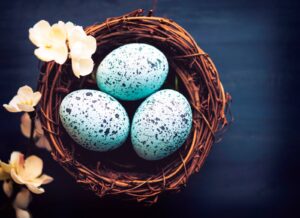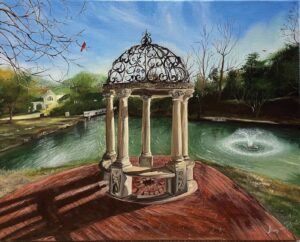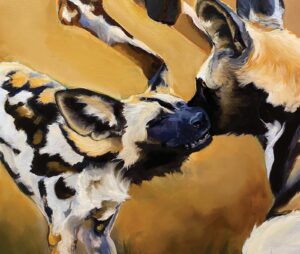For many, Peter Tchaikovsky’s The Nutcracker is a holiday tradition that kicks off the holiday season. When the music starts, you can close your eyes and allow visions of sugarplums, snowflakes, flowers, and an enchanted place enter your imagination.
The Nutcracker is based on E.T.A. Hoffmann’s popular 1816 story “The Nutcracker and the Mouse King.” The idea to use the story as the basis for a ballet came from the impresario and director of the Russian Imperial Theaters, Ivan Vsevolozhsky, who had conceived of The Sleeping Beauty. Vsevolozhsky and the ballet master Marius Petipa, who had choreographed The Sleeping Beauty, wrote the libretto, or story line, for The Nutcracker and handed it off to Tchaikovsky with very specific instructions as to tempo and length of each section of music.
One of the most popular ballets of all time, it was disliked by its composer. While composing The Nutcracker in the summer of 1892, Tchaikovsky wrote in a letter to his nephew that “This ballet is far weaker than The Sleeping Beauty, no doubt about it.” Two years earlier, The Sleeping Beauty had been a huge success, but The Nutcracker experienced problems with the production and with Tchaikovsky, causing him to doubt his work. Once he finally completed the music, Tchaikovsky arranged selections into a suite that he conducted in a concert in early 1892. Soon the ballet encountered another difficulty — Petipa, the ballet master, fell ill and left the choreographing of The Nutcracker to his assistant, Lev Ivanov. Ivanov was reportedly disorganized and unprepared in many rehearsals, and his choreography may have left something to be desired.
At its premiere in St. Petersburg on December 18, 1892, the ballet received scathing reviews. While it continued to be performed occasionally in Russia, the ballet did not gain immense popularity until it came to North America.
In 1940 the touring Ballet Russe de Monte Carlo presented a condensed version in New York City, staged by Alexandra Federova, and continued to perform it throughout America for the next two decades or so. Four years later, in 1944, the San Francisco Ballet presented the first full-length production of The Nutcracker in America, with choreography by William Christensen. Christensen had never seen the full ballet and so asked two Russian dancers what they recalled. The advice of one of them, George Balanchine, was simple: forget the original ballet, just make your own.
A decade later, Balanchine did just that for his New York City Ballet. Since Balanchine was a respected and well-known choreographer, he chose to stage the ballet on a grander scale. He then brought it to a wider audience in 1957 and 1958 with nationally televised live Christmas broadcasts on CBS. His version introduced many aspects now considered integral to the ballet: a certain warmth and coziness, an emphasis on family, and the creation of Drosselmeyer’s nephew, who later be-comes the Nutcracker Prince.
The ballet’s prominent use of children makes it attractive to many parents whose children are studying ballet, as it gives them an opportunity to appear onstage with professionals. The Nutcracker ballet is an annual ritual for many families during the holidays. The music is brilliant, elegant, and vaguely familiar to everyone. The melodies are filled with magic, fantasy, mystery, and love. And no matter how “classical” old-world ballet is, it never ceases to amaze us to watch this highly specialized combination of athleticism and art in action.
Sugar Plum Fairy presides over the kingdom of sugary delights, and she calls for a suite of dances to celebrate the Nutcracker’s daring and victorious battle over the Mouse King. Each dance represents something tempting. The robust trumpet of the Spanish dance is chocolate; the sensual Arabian dancers are coffee; the acrobatic flute of the Chinese dance is tea; the leaping Russian dancer in the trepak is a candy cane; the flute trio of the mirlitons is marzipan; and the bonbons are young child dancers with their Mother Ginger.
The end of the act concludes when Clara’s dream fades away as the people of the Land of Sweets bid her farewell. She awakens from her dream and finds herself by her Christmas tree with her beloved nutcracker.
Casting Call
As an onstage party parent the past couple of years with the Aiken Civic Ballet’s production of The Nutcracker, it’s been an exciting experience to be part of the magic to help bring the opening act to life. The “parents” are a group of older former dancers, parents of dancers, and area artisans who just enjoy theater life. We’ve become a group of friends, even in the off season, and continue to support the ballet. With COVID-19 restrictions and very limited space backstage, party parents won’t be together as part of the cast this year, but we fully support the decision to keep the dancers and stage crew safe. The show must go on!
I’ll miss getting a sneak peek at the different twists and turns choreographer Diane Toole Miller will add to this year’s production. I’ll miss hearing of the ballet’s seamstresses whipping up something special on their sewing machines, to be unveiled later and add to the show’s pageantry. Most importantly, I’ll miss seeing how much the young dancers have grown and developed their dance skills over the summer. They are my adopted daughters and sons, a stage family.
There’s a camaraderie among the cast, crew, and volunteer (real) parents back stage. Costume malfunctions, stepping on your partner’s foot, (me) accidentally gluing a fake eyelash mistakenly to Mother Ginger’s (played by Don Dupee) eye-brow, not to mention one plastic champagne glass twirling across the stage during a rehearsal — these are bloopers never to be forgotten.
It’s Nutcracker time! Aiken Civic Ballet Company will perform The Nutcracker: Land of The Sweets on December 18, 19, and 20. You and your family can either attend limited-seating performances at USCA’s Etherredge Center or watch live-streaming online from the comfort from your home. For more information, visit the Aiken Civic Ballet Company’s website at AikenCivicBallet.org.
The Nutcracker Doll
The most popular nutcrackers at the time of World War I were wood-carved human and animal heads made in the Gröden Valley of northern Italy. Nutcracker dolls, also known as Christmas nutcrackers, are decorative nutcracker figurines most commonly made to resemble a toy soldier. In German tradition, the dolls are symbols of good luck, frightening away evil spirits. Nutcrackers are also a part of German folklore, serving as protectors of a home.
It’s Nutcracker time!
Aiken Civic Ballet Company will perform The Nutcracker: Land of The Sweets on December 18, 19, and 20. You and your family can either attend limited-seating performances at USCA’s Etherredge Center or watch live-streaming online.
























